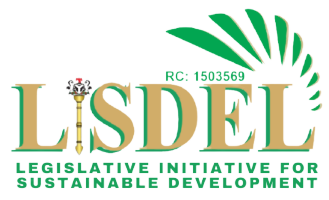World Economic Forum Published Global Gender Gap Index; India Ranks 129th Out Of 146 Countries
- Gender
- No Comment
- 257

India has experienced a setback in its efforts towards gender equality, falling two places to 129th on the World Economic Forum’s Global Gender Gap Index. Despite some progress in certain areas, India continues to lag behind its neighbors in South Asia.
Regional Comparison
Within South Asia, India ranks fifth, trailing behind Bangladesh, Nepal, Sri Lanka, and Bhutan. Notably, Pakistan ranks lowest in the region and 145th globally, highlighting pervasive gender disparities across South Asia.
India struggles with economic parity, with less than 30% gender parity in estimated earned income. This places India among countries with the lowest levels of economic parity, alongside Bangladesh, Sudan, Iran, Pakistan, and Morocco. Furthermore, labor force participation rates in India remain below 50%, indicating significant gender disparities in the workforce.
Progress And Challenges
While India has made strides in closing its gender gap, having closed 64.1% of it in 2024, slight decreases in educational attainment and political empowerment parameters have led to a decline in overall ranking. Despite this setback, India’s economic parity score has shown improvement over the past four years.
Educational Attainment
India’s educational attainment subindex reflects a mixed picture. While the country ranks first in gender parity for secondary education enrollment, it lags significantly in tertiary enrollment, literacy rates, and primary education enrollment. This disparity has led to a notable drop in India’s overall educational attainment ranking.
In terms of political empowerment, India performs well on indicators such as the presence of female heads of state but falls short in women’s representation at the federal level. With only 6.9% of ministerial positions and 17.2% representation in parliament, India ranks 65th globally in political empowerment of women.
Economic Parity And Opportunity
India’s economic parity and opportunity subindex remain a concern, with the country maintaining its position as one of the lowest globally. Ranking 142nd, India faces challenges in labor force participation rates and wage equality for similar work, highlighting significant disparities in earnings between men and women.
Health And Survival
India maintains its position at 142nd on the health and survival index. While not experiencing a decline in this area, India continues to grapple with gender disparities in health outcomes and access to healthcare services.
Globally, the World Economic Forum’s report indicates that 68.5% of the gender gap has been closed. However, achieving full gender parity at the current pace would take 134 years, equivalent to five generations. The slow progress is underscored by a mere 0.1 percentage point improvement since the previous year.
Global Rankings
Iceland retains its top position on the Global Gender Gap Index for the tenth consecutive year, followed by Finland, Norway, New Zealand, and Sweden in the top five. Notably, the United Kingdom holds the 14th position, while the United States ranks 43rd globally.
The six nations that have improved the most are Ecuador (+34, placed 16th), Guatemala (+24, placed 93rd), Cyprus (+22, placed 84th), Romania and Greece (+20, placed 68th and 73rd, respectively), and Sierra Leone (+32, placed 80th).
Europe
Europe maintains the top position with a gender parity of 75%. Seven of the top 10 countries are from Europe. Iceland is the most gender-equal country, with 93.5 percent of its overall gender gap. Finland, Norway, Sweden, Germany and Ireland, are all closing over 80 per cent of their gender gaps. Europe’s overall parity score has improved by 6.2 percentage points since 2006.
North America scores 74.8 percent, placing it in second place. Outstanding outcomes in terms of educational attainment (100%) and health (96.7%). Furthermore, a whopping 76.3 percent of individuals are involved in the economy.
Latin America And The Caribbean region
The region with the biggest improvement among all is Latin America and the Caribbean, with a score of 74.2 percent. The improvements in workforce participation have been encouraging.
East Asia And Pacific Region
With a high economic participation and opportunity score of 69.2 percent, the East Asia and Pacific Region comes in fourth place. Political empowerment lags behind the strong outcomes in health and education.
Central Asia
With 69.1%, Central Asia comes in second. While health and educational attainment are almost equal, scores for political and economic parity have declined since 2023.
Sub-Saharan Africa
With a score of 68.4%, Sub-Saharan Africa has made considerable strides toward political empowerment. Nonetheless, there are obstacles with regard to economic engagement and educational attainment.
Southern Asia
Southern Asia received a score of 63.7%. The report stated that while the region has made significant progress in educational attainment since 2006, it still faces challenges with economic participation and certain aspects of political empowerment, such as representation in parliament and at the ministerial level. Bangladesh leads the region, followed by Nepal and Sri Lanka.
Middle East And North Africa
Middle East and North Africa come in last with a score of 61.7 per cent. Despite low scores in economic participation and political empowerment, the region has seen marked improvements in educational attainment since 2006. Labour-force participation remains low too. The UAE and Israel are the top performers in the region.
Workforce Participation
Women’s workforce participation remains below men’s in nearly every industry an economy, with women accounting for 42 per cent of the global workforce and 31.7 per cent of the senior leaders. Additional factors, such as gender gaps in professional networks and care responsibilities are slowing economic progress for women, the report stated. Closing the gap could increase global GDP by more than 20 per cent.
Wipro joins World Economic Forum’s New Work Standards initiative
India’s decline in the Global Gender Gap Index serves as a reminder of the persistent challenges the country faces in achieving gender equality. While there have been notable improvements in certain areas, significant disparities remain in economic, educational, and political spheres. Addressing these disparities is crucial for India to progress towards a more inclusive and equitable society.
https://www.msn.com/en-in/money/topstories/world-economic-forum-published-global-gender-gap-index-india-ranks-129th-out-of-146-countries/ar-BB1o9BWT?ocid=BingNewsSearch




